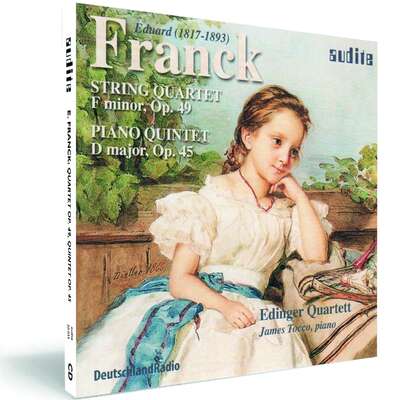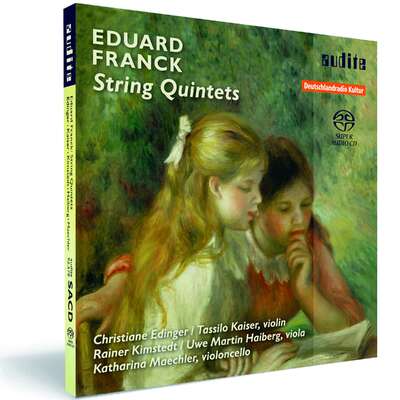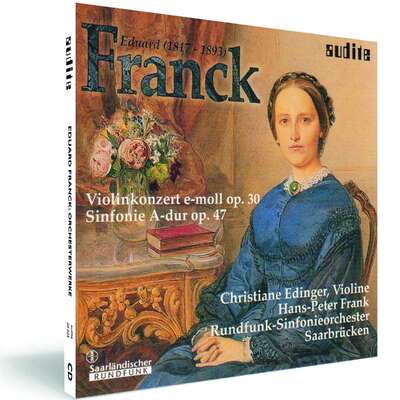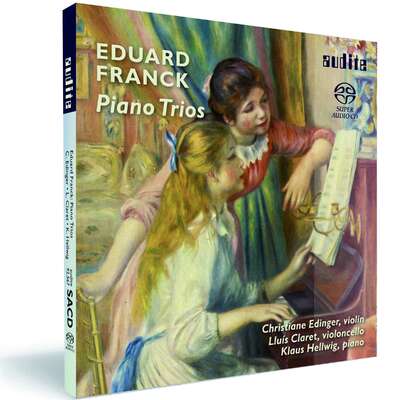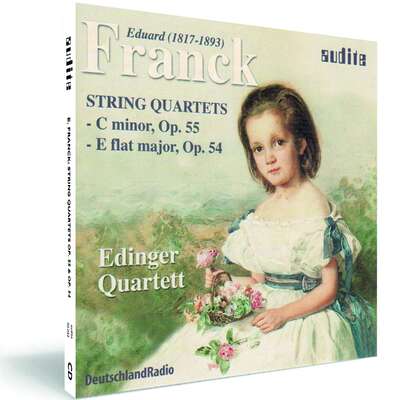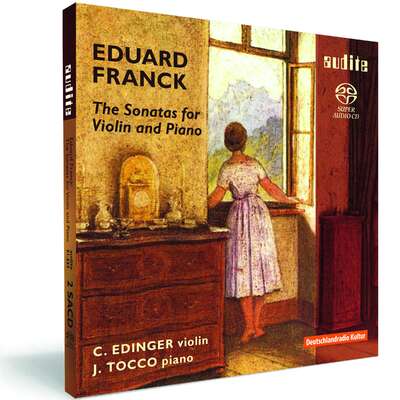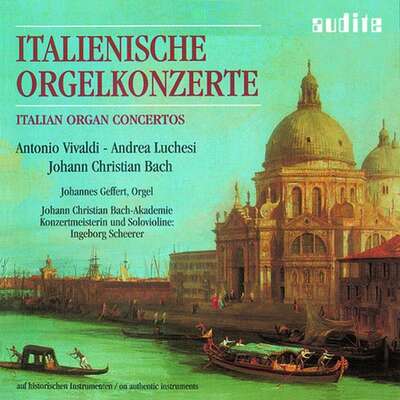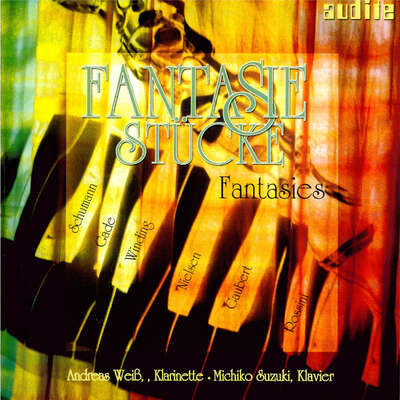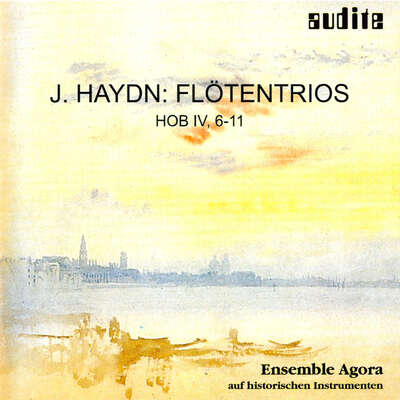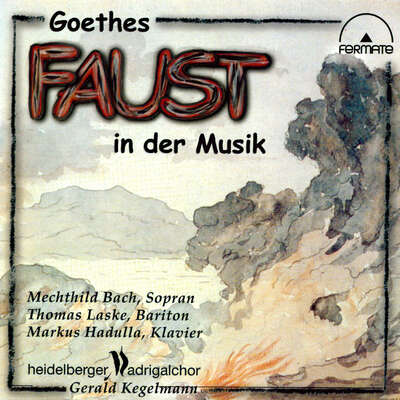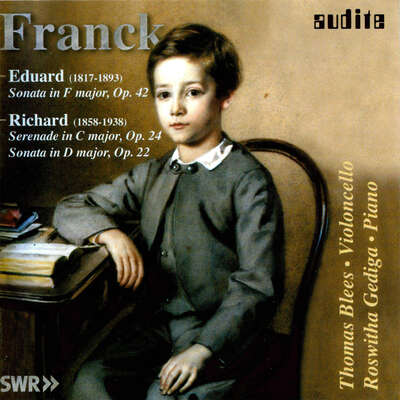
Nach der vielbeachteten Erstaufnahme der beiden Streichquartette op. 54 und 55 präsentiert das Edinger Quartett auch das dritte von Eduard Franck erhaltene Werk dieser Gattung, das f-moll-Quartett op. 49 . Das Werk steht in der Tradition Mendelssohns, verkörpert aber Eduard Francks eigene...mehr
"Eine CD mit bravouröser, mitreißender Musik, die jeder Kammermusikfreund mit Freude (in diesen auch technisch herausragend guten Ersteinspielungen) entdecken wird." (Pizzicato)
Details
| Eduard Franck: String Quartet and Piano Quintet | |
| Artikelnummer: | 20.033 |
|---|---|
| EAN-Code: | 4022143200334 |
| Preisgruppe: | BCA |
| Veröffentlichungsdatum: | 1. Januar 2001 |
| Spielzeit: | 67 min. |
Informationen
Nach der vielbeachteten Erstaufnahme der beiden Streichquartette op. 54 und 55 präsentiert das Edinger Quartett auch das dritte von Eduard Franck erhaltene Werk dieser Gattung, das f-moll-Quartett op. 49. Das Werk steht in der Tradition Mendelssohns, verkörpert aber Eduard Francks eigene musikalische Sprache und ist durch großen Kontrastreichtum und einen dramatischen Gestus geprägt. Ergänzt wird die Einspielung der Kammermusik Eduard Francks mit dem D-dur-Klavierquintett op. 45. Hier stehen kantable Themen im Vordergrund, die stark modulierend ausgearbeitet werden.
Die Lübecker Professorin Christiane Edinger und das von ihr gegründete Edinger Quartett haben sich die Pflege des vernachlässigten Repertoires zur Aufgabe gemacht. Die überzeugende Interpretation dieser wiederentdeckten kammermusikalischen Meisterwerke ist der hörbare Erfolg dieses Engagements und ihrer fruchtbaren Zusammenarbeit mit dem international renommierten Pianisten James Tocco.
Besprechungen
www.amazon.co.uk | 1 Jun 2009 | J. A. Peacock | 1. Juni 2009
A disc that shows two sides to a consistently enjoyable and unjustly neglected composer<br /> From the list of his works, Eduard Franck seems to have beenMehr lesen
From the list of his works, Eduard Franck seems to have been mainly drawn to the major keys; there were two minor key symphonies that now appear to be lost but there is only a smattering of pieces in minor keys among the chamber works. This disc, then, offers an opportunity to view two different sides to this essentially genial and warm-hearted musician, combining as it does a string quartet in F minor with a piano quintet in the sunny key of D major.
There seems to be some debate over when the quartet was composed and it sounds like an early work, given the seemingly strong influence of Mendelssohn's quartets. It would perhaps be too much to describe it as relentlessly bleak or tragic in tone, but throughout its length only the tender, song-like `adagio molto espressivo' offers a period of consolation. In contrast to Franck's customary vivacious and folksy scherzi, the `menuetto' in this work maintains the serious tone of the piece overall. These two movements are preceded by an `allegro risoluto' of sustained and disciplined energy, its polyphonic working out (including a fugal section in the development) underlining the seriousness of Franck's intent from a technical perspective as well as an emotional standpoint. The finale brings no easy resolution and returns to the spirit of the first movement, with driving energy. It is a fine piece overall, more dramatic and concentrated than the elegiac piano trio in E minor recently released by Audite, Franck - Piano Trios Op.11, Op.58.
With the D major piano quintet we are in more familiar territory. Like so many of his chamber works, at around 37 minutes in length, this work has the expansive feel of a musician at one with his mode of expression and comfortable in taking his time saying what he has to say. The opening movement is one of Franck's most passionate - in the exposition, listen to the surging restatement of the opening melody in the high registers of the violin, before Franck moves on to the well-contrasted fanfare-like figure that forms the second subject; it leads after the exposition repeat to an ardently expressive development section. The scherzo (one of Franck's best, in my opinion) has an ebullient energy and picks up on the fanfare-like elements in the first movement, transmuting them into hunting horn signals - it is as exhilarating as it is delightful; the trio section opens with a stomping rhythmic figure that heralds an engaging rustic dance.
After the passionate first movement and the energy of the scherzo and trio, the tone of the extended `andante con moto' is perfectly judged. It opens with a long-breathed, hymn-like melody in the strings - answered, as if antiphonally in a cathedral, by the piano. There is a contrasting central section, but not one that makes its point dramatically and the beautifully poised tone of repose is maintained throughout the movement. It is good to have this opportunity to draw breath mentally, as the finale is a tour-de-force - a sort of `perpetuum mobile' in its general effect, though not without some sweet-toned contrasting episodes, it carries the work to its close with bubbling wit.
I probably don't need to say at this stage that I recommend this disc. I seem to have become something of a solitary advocate on the British Amazon site for this composer, but there are several reviews of Eduard Franck recordings on the US site that you can check should you require a second opinion on this - to my mind - unfailingly delightful and satisfying musician.
From the list of his works, Eduard Franck seems to have been
Diapason | Janvier 2005 | Jean-Claude Hulot | 1. Januar 2005
La firme Audite a entrepris de réhabiliter la musique d’Eduard Franck, romantique allemand qui fut l’élève particulier de Mendelssohn et quiMehr lesen
Les deux sonates pour violoncelle et piano sont de réelles réussites qui mettent en valeur le lyrisme flatteur de l’instrument, et qui mériteraient de revenir au répertoire ; l’éditeur leur associe celles de Richard Franck, fils d’Eduard et élève de Reinecke (lui-même successeur de Mendelssohn à Leipzig), également pianiste, compositeur et chef d’orchestre. Moins inspirées que celles de son père, elles n’en témoignent pas moins de la qualité « artisanale » du travail du fils Franck ; bonne idée d’avoir fait le lien par les Trois pièces, charmeuses et un peu salonnardes de Reinecke. Enfin, les deux trios avec piano de Richard sont également marqués par les influences de Mendelssohn, Schubert et Schumann, avec les mêmes écriture et invention mélodique que son père, quoique encore plus anachronique (1893 et 1900) ; les deux sonates pour violon et piano (1890 et 1903) sont tout autant charmeuses, illustrant avec bonheur la facture de cette « musique de salon » comme la baptisait avec condescendance Max Reger. Au demeurant, bien défendues par les musiciens réunis pour ces disques, ces pages inédites ne manquent pas d’attrait et justifient qu’on sorte des sentiers battus pour aller à leur rencontre.
Neue Musikzeitung | Juli/August 2004 | Hanspeter Krellmann | 1. Juli 2004 Schatten-Dasein – Komponisten, die aus dem Raster fallen
Unser musikgeschichtliches Verständnis orientiert sich an Eckdaten: SieMehr lesen
CD Compact | Num. 170, novembre 2003 | Josep Pascual | 1. November 2003
Hace pocos meses, empezó a distribuirse entre nosotros un compacto delMehr lesen
www.musicweb-international.com | 01.11.2003 | Rob Barnett | 1. November 2003
Audite have rescued the music of Breslau-born composer Eduard Franck from oblivion. At the invitation of Ferdinand Hiller, Franck became one of theMehr lesen
The String Quartet in F minor Op. 49 is Mozartian but infused with a more modern Mendelssohnian sensibility. It has a swimmy sense of flow with fugal activity (4.48 in I) and something of the Viennese flâneur in the last two (of four) movements. The Adagio Molto Espressivo has the Olympian calm of the Schubert String Quintet. The Piano Quintet has the tempestuous nature of the first Brahms Piano Concerto offset somewhat by the sort of childlike simplicity we have come to associate with Mozart's simple sets of variations. The later movements track through sturdy village dances, weighty hymnal seriousness and rude virtuoso energy. There is much more Schumann in the last movement which sports a conventional 'flashed' ending.
Civilised chamber music partly in the shadow of Schumann and Mendelssohn.
klassik.com | 03.02.2002 | Frédéric Döhl | 3. Februar 2002
Die vorliegende Aufnahme enthält zwei Kammermusikwerke des aus BreslauMehr lesen
Pizzicato | Februar/März 2002 | AC | 1. Februar 2002
Mit dem Mendelssohn-Schüler Eduard Franck (1817-93) haben die Geigerin Christiane Edinger und das Label Audite eine wahrlich lohnende QuelleMehr lesen
Crescendo | 1/2002 | AC | 1. Februar 2002
Mit dem Mendelssohn-Schüler Eduard Franck (1817 –93) haben die GeigerinMehr lesen
Bayernkurier | Nr. 36 | Wolfgang Johannes Müller | 6. September 2001
NEUER ROMANTIKER
Ein Meister namens Eduard Franck
Über einen vergessenenen Komponisten noch so begeistert zu reden, istMehr lesen
Frankfurter Allgemeine Zeitung | 17.08.2001 | Werner M. Grimmel | 17. August 2001
Pflicht zur Romantik
Da ist Platz neben den Gipsbüsten: Eduard Franck hat ihn verdient
Daß er "auf diesem Wege weiter und vorwärts arbeiten" möge, wünschteMehr lesen

